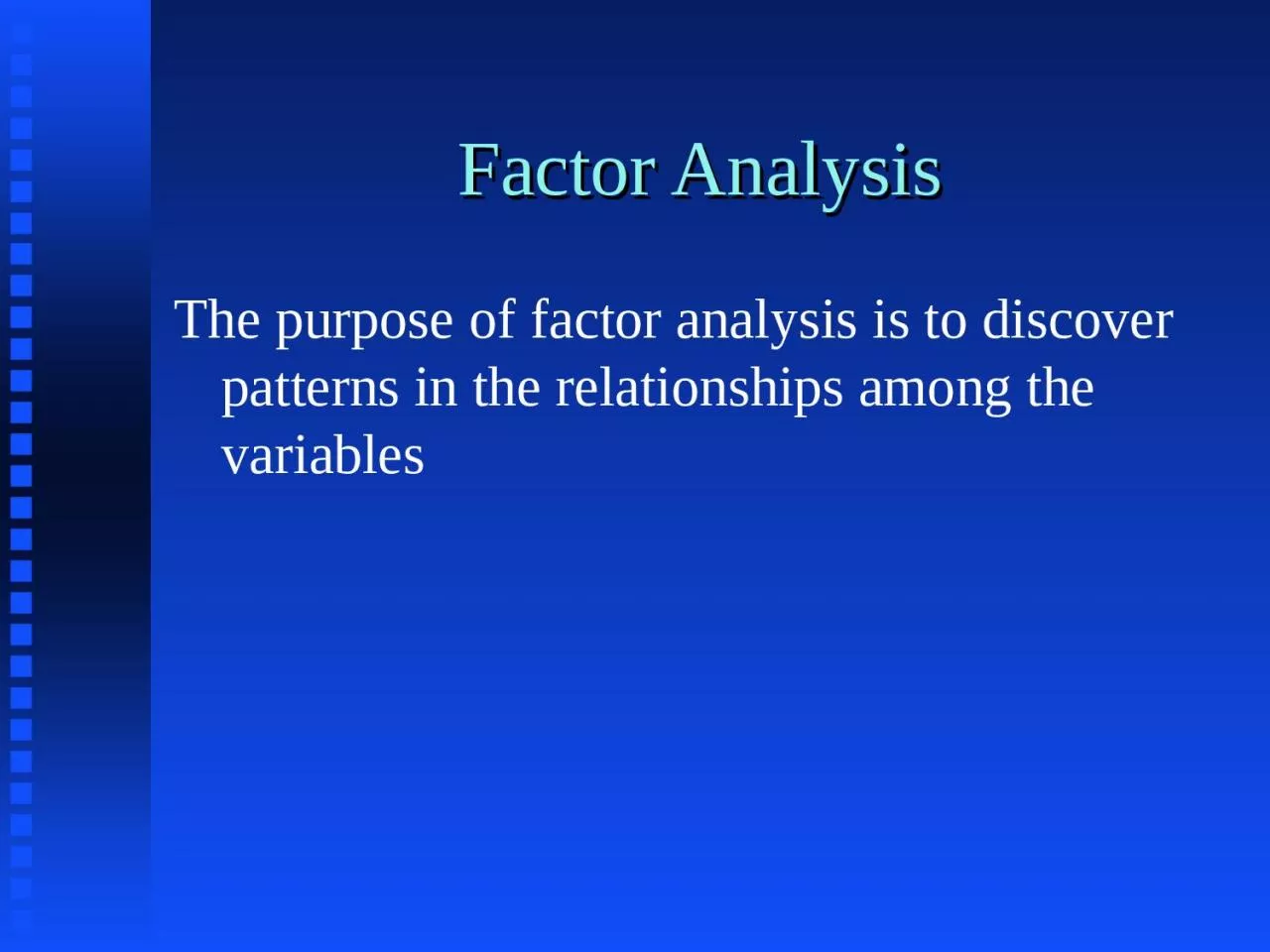

variables Factor Analysis Form of multiple correlations Checking for construct validity Do questions measure the same dimension For use between or within a test Identify items which cluster together ID: 999036
Download Presentation The PPT/PDF document "Factor Analysis The purpose of factor an..." is the property of its rightful owner. Permission is granted to download and print the materials on this web site for personal, non-commercial use only, and to display it on your personal computer provided you do not modify the materials and that you retain all copyright notices contained in the materials. By downloading content from our website, you accept the terms of this agreement.
1. Factor AnalysisThe purpose of factor analysis is to discover patterns in the relationships among the variables
2. Factor AnalysisForm of multiple correlationsChecking for construct validityDo questions measure the same dimension?For use between or within a testIdentify items which cluster together
3. Correlation Matrix 1 2 3 4 5 1. Vocab 1.00 .22 .77 .20 .502. Algebra .22 1.00 .21 .65 .483. Analogy .77 .21 1.00 .19 .524. Geom .20 .65 .19 1.00 .475. Alg-wrd .50 .48 .52 .47 1.00
4. Factor analysis of 5 items Factors I II Vocabulary .917 .101Algebra .113 .885Analogy .925 .094Geometry .086 .891Algebra-Word .594 .573% of variance 54.00 26.00
5. Factor loadingsIdentify clusters of questionscorrelationspositive or negativemay load on more than one factorscore indicates strength of question
6. Types of factor analysisExploratory factor analysisConfirmatory factor analysis
7. Confirmatory factor analysisStrong hypothesis -- There are two factors in this test -- questions 1-5 load onto one factor -- questions 6-10 load onto the other factor
8. Factor loadings - 1Qs# Factor 1 Factor 21 .632 .523 .434 .895 .746 .367 .748 .869 .6410 .52
9. Factor loadings - 2Qs# Factor 1 Factor 21 .632 .523 .434 .895 .746 .367 .748 .869 .6410 .52
10. Factor loadings - 3Qs# Factor 1 Factor 21 .632 -.523 .434 .895 -.746 .367 .748 -.869 .6410 -.52
11. Locus of Control – 1 factorQs# Factor 1 1 .632 .523 -.434 -.895 -.746 .32 7 .26 8 .75 9 .19 10 -.80
12. Locus of Control multiple factorsQs# 1 2 3 4 5 61 .562 .453 .344 .785 .396 .408 .67 9 .50 14 .34 18 .75
13. Need for Closure – factors exampleQs# Order Predict Decisive Ambiguity Closed minded1 .xxx 2 -.xxx 3 .xxx4 .xxxx -.xxx x .xxx x -.xxx x .xxx .xx xx .xxx x .xxx -.xx .xxxx .xxxx -.xxx45 .xxx4647 -.xxx
14.
15. HypothesisThis test measures 4 different factors questions 1-5 are one factor questions 6-10 are a second factor questions 11-15 are a third factor questions 16-20 are a fourth factor
16. Project questionWhat do you think the factor structure of your test would look like?